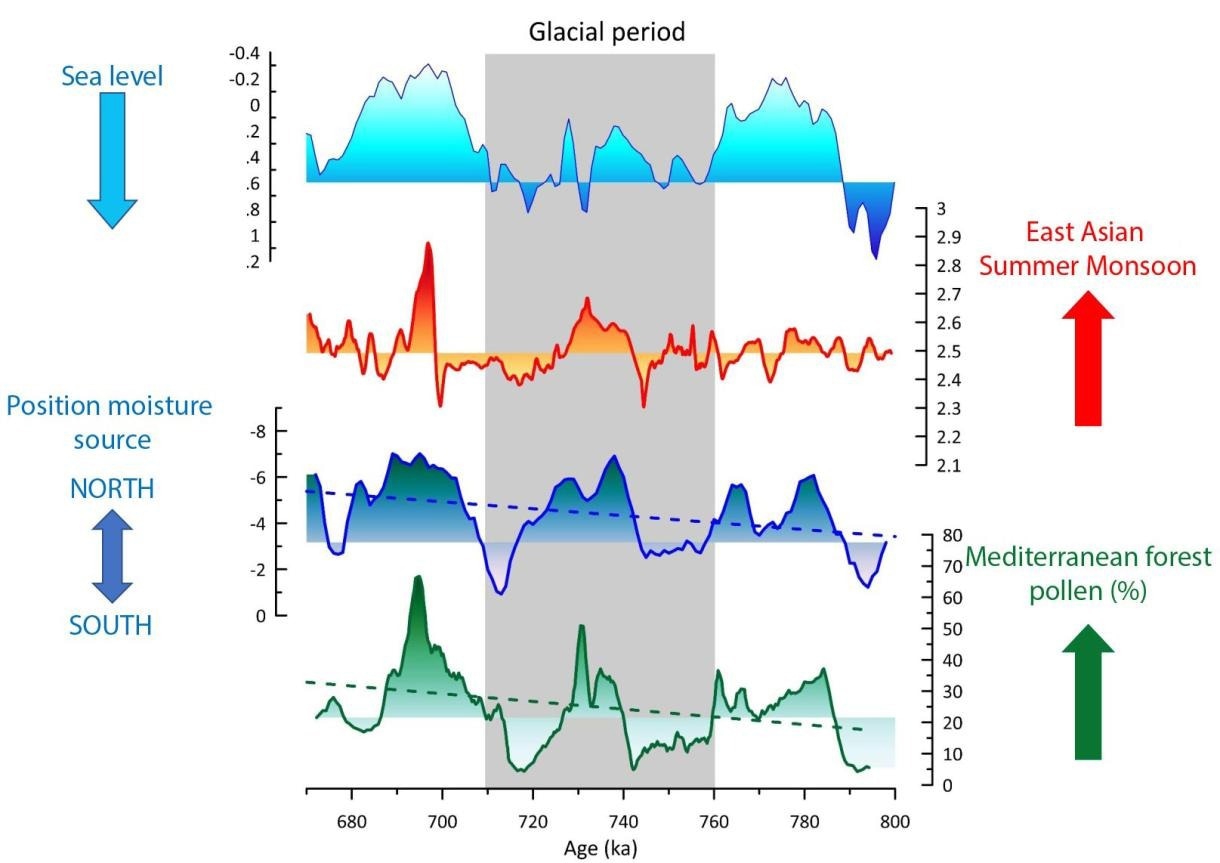Approximately 700,000 years ago, a “warm ice age” irrevocably altered the climate cycles on Earth. The polar glaciers extended significantly during this abnormally warm and moist time.
 Long-term expansion of Mediterranean forests and increase in precipitation as well as an enhanced East Asian summer monsoon associated with the increase and northward migration of the Atlantic moisture source. Paradoxically, the glacial was warmer and wetter than the preceding interglacial. Image Credit: © André Bahr
Long-term expansion of Mediterranean forests and increase in precipitation as well as an enhanced East Asian summer monsoon associated with the increase and northward migration of the Atlantic moisture source. Paradoxically, the glacial was warmer and wetter than the preceding interglacial. Image Credit: © André Bahr
A European research group, including Earth scientists from Heidelberg University, utilized recently acquired geological data in conjunction with computer simulations to recognize this seemingly paradoxical connection. According to the experts, this substantial alteration in the Earth’s climate caused the change in climatic cycles, signifying a critical stage in the planet’s later climate evolution.
The emergence of huge ice sheets in the Northern Hemisphere characterizes geological ice ages, also known as glacial periods. Every 100,000 years over the last 700,000 years, phases transitioned between various glacial and warm periods.
However, the Earth’s climate was once dominated by 40,000-year cycles with shorter and weaker glacial periods. Climate cycles changed during the Middle Pleistocene Transition era, which began roughly 1.2 million years ago and concluded approximately 670,000 years ago.
The mechanisms responsible for this critical change in the global climate rhythm remain largely unknown. They cannot be attributed to variations in the orbital parameters governing the Earth’s climate. But the recently identified ‘warm ice age’, which caused the accumulation of excess continental ice, did play a critical role.
Dr. André Bahr, Associate Professor, Institute of Earth Sciences, Heidelberg University
For their research, the investigators utilized new climate records from a drill core off Portugal and loess records from the Chinese Plateau. After that, the data was incorporated into computer simulations. Over the past 800,000 to 670,000 years, the models reveal a long-term warming and wetting trend in both subtropical regions.
During the Middle Pleistocene Transition period, sea surface temperatures in the North Atlantic and tropical North Pacific were warmer than during the preceding interglacial, the interval between the two ice ages. This resulted in higher moisture production and rainfall in Southwest Europe, increased Mediterranean forests, and increased summer monsoon in East Asia.
The moisture also made its way to the poles, where it helped to expand the Northern Eurasian ice sheets.
They persisted for some time and heralded in the phase of sustained and far-reaching ice-age glaciation that lasted until the late Pleistocene. Such expansion of the continental glaciers was necessary to trigger the shift from the 40,000-year cycles to the 100,000-year cycles we experience today, which was critical for the Earth’s later climate evolution.
Dr. André Bahr, Associate Professor, Institute of Earth Sciences, Heidelberg University
Researchers from France, Germany, Spain, and Portugal contributed to the study. The research was supported by the German Research Foundation.
Journal Reference:
Sánchez Goñi, M. F., et al. (2023). Moist and warm conditions in Eurasia during the last glacial of the Middle Pleistocene Transition. Nature Communications. doi.org/10.1038/s41467-023-38337-4.